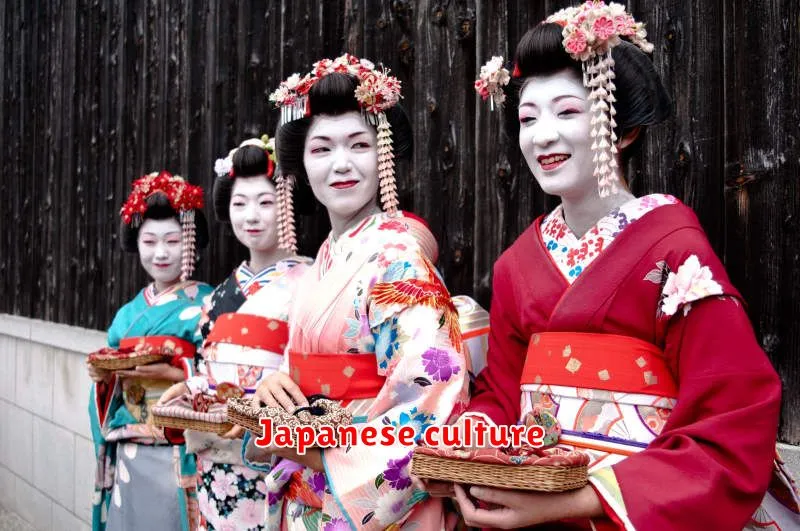Ready to embark on an unforgettable adventure? Discover 10 incredible cultural landmarks in Japan that will leave you breathless. From the serene beauty of ancient temples to the vibrant energy of bustling cities, this curated itinerary promises an authentic Japanese experience you won’t soon forget. Prepare to be amazed by iconic architecture, immerse yourself in rich history, and explore the captivating culture of Japan. This guide is your passport to a journey filled with breathtaking sights and unforgettable moments. Let’s dive into the must-see destinations that await!
Itsukushima Shrine
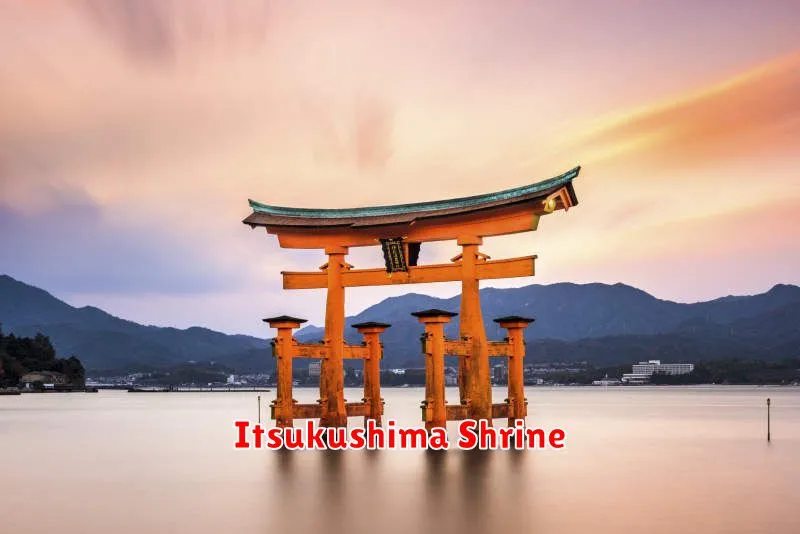
Nestled on Miyajima Island in Hiroshima Prefecture, Itsukushima Shrine is a breathtaking testament to Japanese artistry and spirituality. Its iconic “floating” torii gate, seemingly emerging from the sea, is a globally recognized symbol of Japan.
The shrine’s unique location, built directly on the water, allows for stunning views at high tide, where the gate appears to float. At low tide, you can walk to the gate and explore the shrine’s grounds, discovering beautifully preserved halls and other structures.
Beyond the torii gate, Itsukushima Shrine offers a serene escape, offering a glimpse into Japan’s rich cultural heritage. The island itself is also home to lush forests and wildlife, making it a perfect destination for those seeking both cultural and natural beauty.
Visiting Itsukushima Shrine is an unforgettable experience; plan your visit around the tides to fully appreciate the magic of the floating gate. Remember to check the tide times beforehand to make the most of your trip.
Osaka Castle
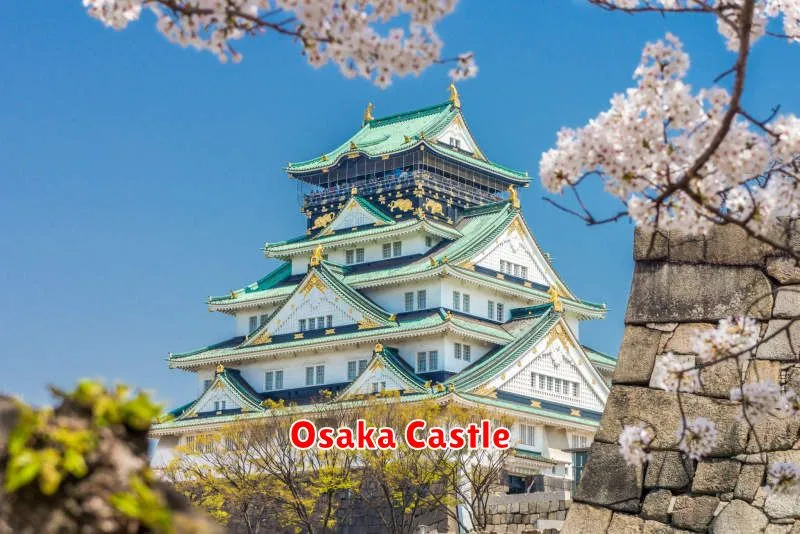
Osaka Castle, a majestic landmark in Osaka, Japan, stands as a symbol of the city’s rich history and cultural heritage. Its imposing presence dominates the skyline, instantly recognizable with its striking golden roof and towering stone walls.
Originally built in the late 16th century by Toyotomi Hideyoshi, a powerful warlord, the castle has undergone several reconstructions after being destroyed by fire and war. Today, visitors can explore the eight-story main keep, offering panoramic views of the city and surrounding areas from its top floor. Inside, you’ll find museums showcasing artifacts and information about the castle’s history and the lives of its significant figures.
Beyond the main keep, the extensive castle grounds provide a tranquil escape. Stroll through the beautiful parks and gardens surrounding the castle, offering a peaceful retreat from the bustling city. The grounds also feature museums, teahouses, and other historical structures, enriching the overall visitor experience.
A visit to Osaka Castle is a must for any traveler seeking to delve into Japan’s fascinating past. Its blend of impressive architecture, historical significance, and serene surroundings creates an unforgettable experience.
Nijo Castle
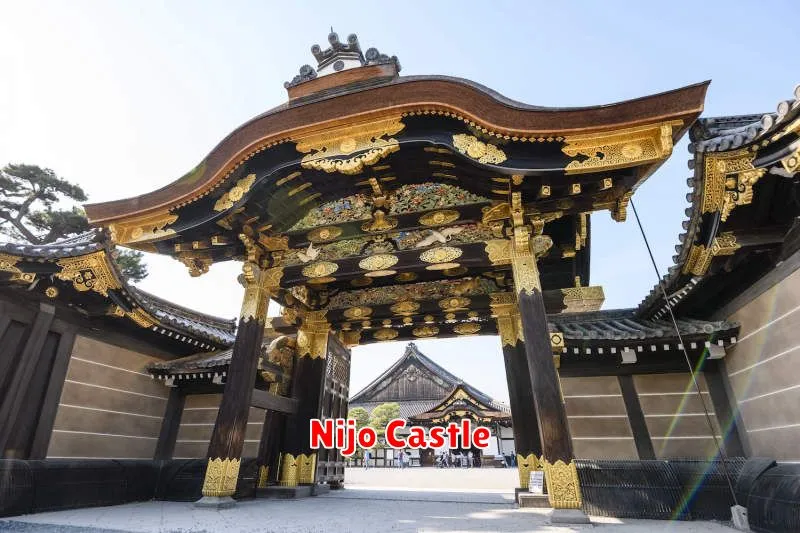
Nijo Castle, a UNESCO World Heritage site, stands as a testament to Japan’s rich history and architectural prowess. Located in Kyoto, this magnificent castle was built in the early 17th century by Tokugawa Ieyasu, the founder of the Tokugawa shogunate.
Its most striking feature is the intricate nightingale floors (uguisubari). These floors are designed to chirp like a nightingale when walked upon, a clever security measure to alert occupants of intruders. The castle’s stunning architecture showcases a blend of traditional Japanese design and the grandeur of the shogunate era.
Beyond the unique floors, visitors can explore the beautifully preserved gardens, ornate pavilions, and impressive castle walls. The castle offers a captivating glimpse into the life and power of the shogun, a pivotal figure in Japanese history. A visit to Nijo Castle is a must for anyone wanting to experience a piece of Japan’s imperial past.
Kiyomizu-dera
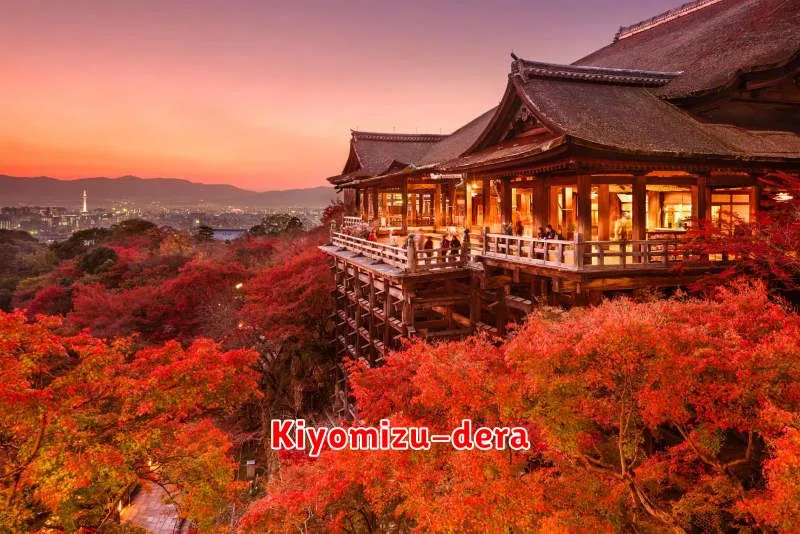
Nestled in the eastern hills of Kyoto, Kiyomizu-dera is a breathtaking temple complex renowned for its stunning wooden stage and panoramic views of the city. The temple’s name, meaning “Pure Water Temple,” refers to the Otowa Waterfall on the temple grounds, whose waters are said to grant wishes if you drink from its three separate streams.
Built primarily of wood without the use of nails, the main hall of Kiyomizu-dera is a testament to exceptional craftsmanship. Its expansive veranda offers spectacular views, making it a popular spot for photography and contemplation. The temple’s grounds also boast a variety of other structures, including pagodas and shrines, each contributing to its rich history and beauty.
Beyond its architectural splendor, Kiyomizu-dera holds significant cultural importance in Japan. It’s associated with the Hossho-ji sect of Buddhism and plays a role in various traditional ceremonies and festivals throughout the year. A visit to Kiyomizu-dera is not merely sightseeing; it’s an immersive experience into the heart of Japanese history and spirituality.
Ryoanji Temple
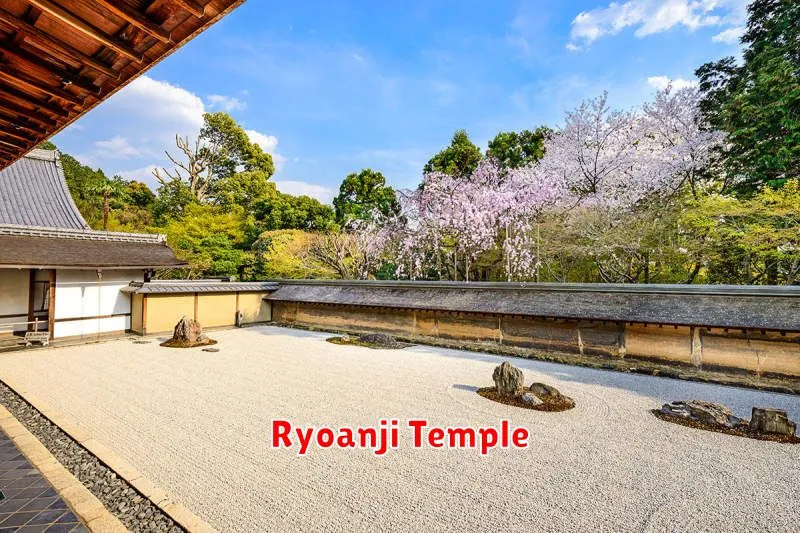
Nestled in Kyoto, Ryoanji Temple is renowned for its breathtaking rock garden. This Zen temple, a UNESCO World Heritage site, offers a tranquil escape from the bustling city.
The garden’s fifteen rocks, meticulously arranged in five groups within a rectangular bed of raked gravel, are a source of endless contemplation. The minimalist design invites visitors to find their own meaning and achieve a state of Zen. The carefully sculpted landscape and the surrounding architecture create an atmosphere of serene beauty and spiritual reflection.
Beyond the iconic garden, Ryoanji Temple houses several other buildings including a main hall and various other structures that showcase traditional Japanese architecture. Exploring these provides further insight into the temple’s rich history and the principles of Zen Buddhism.
A visit to Ryoanji Temple is not just sightseeing; it’s an experience. It’s a chance to slow down, appreciate the subtle beauty of simplicity, and connect with a profound aspect of Japanese culture.
Nagasaki Peace Park
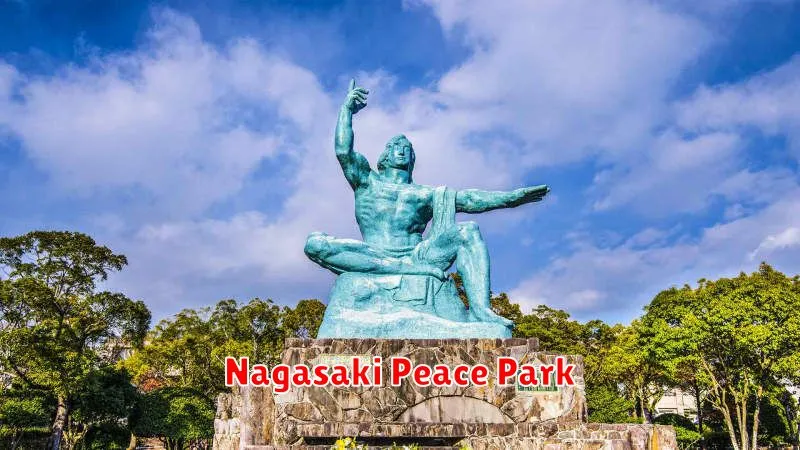
The Nagasaki Peace Park stands as a poignant reminder of the atomic bombing and a powerful testament to the enduring hope for peace. Located in Nagasaki, Japan, this serene park offers a profound and moving experience for visitors.
Within the park, you’ll find the Atomic Bomb Hypocenter Stone, marking the exact spot where the bomb detonated. The Children’s Peace Monument, a statue of a girl praying for peace, is particularly heartbreaking and deeply symbolic. The park also features various memorials and museums dedicated to the victims and the impact of the bombing.
Visiting the Nagasaki Peace Park is not just a sightseeing experience; it’s a journey into history and a profound reflection on the importance of peace and the devastating consequences of war. It’s a place of quiet contemplation and serves as a strong reminder of the need for global peace and understanding.
Kanazawa’s Kenroku-en Garden
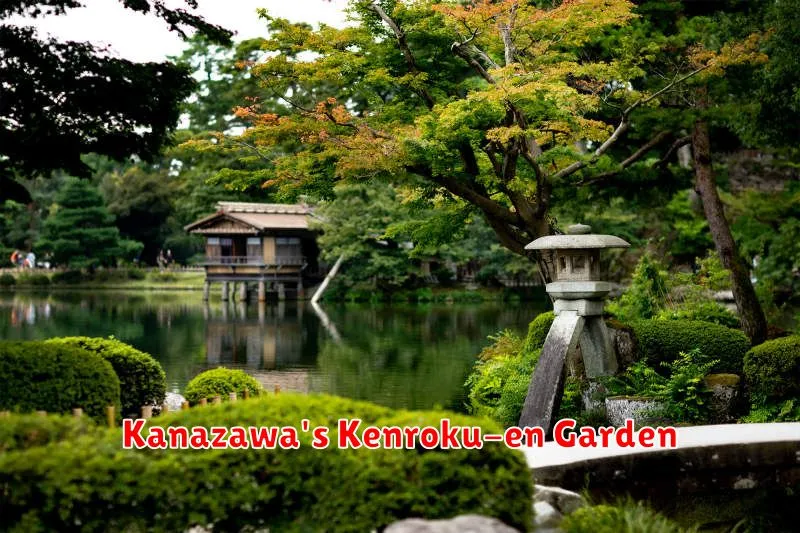
Considered one of Japan’s three most beautiful landscape gardens, Kenroku-en in Kanazawa offers a breathtaking display of natural beauty and meticulous design. This expansive garden showcases a harmonious blend of different gardening styles, including ponds, streams, hills, and meticulously pruned trees. Its stunning vistas change dramatically with the seasons, offering a unique experience year-round.
Visitors can wander through carefully planned pathways, admiring the variety of plants and flowers, and discovering hidden corners and charming structures. The garden’s design embodies the six elements considered essential for a perfect garden in Japanese aesthetics: extensive views, seclusion, artificiality, antiquity, water features, and skillful use of space. Whether you’re a seasoned gardener or simply appreciate the beauty of nature, Kenroku-en is a truly unforgettable experience.
Beyond its aesthetic appeal, Kenroku-en also provides a glimpse into Japan’s rich history and culture. It’s a serene escape from the bustling city, offering a place for peaceful reflection and appreciation of traditional Japanese landscape design. Make sure to allocate ample time to fully explore its diverse landscapes and hidden gems; it’s a must-see destination for any traveler in Japan.
Meiji Shrine
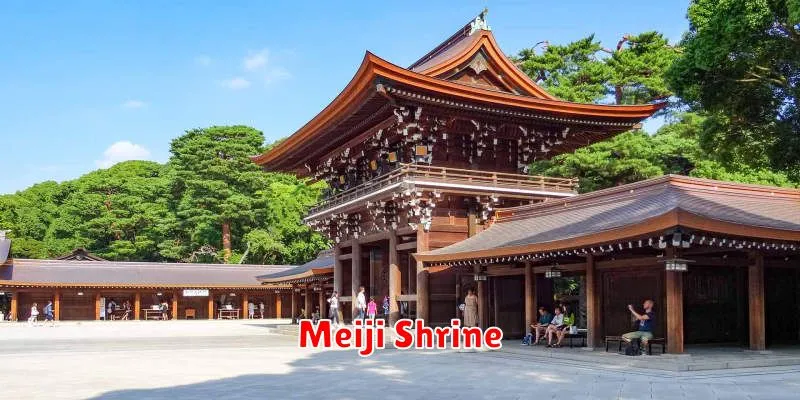
Nestled within the bustling metropolis of Tokyo, the Meiji Jingu Shrine offers a tranquil escape. Dedicated to Emperor Meiji and Empress Shoken, this serene sanctuary is a beautiful example of traditional Japanese architecture. The shrine’s expansive grounds, filled with towering trees and lush greenery, provide a peaceful atmosphere, a stark contrast to the city’s vibrant energy.
Key features include the impressive main shrine buildings, constructed from cypress wood, and a peaceful inner garden. Visitors can often find traditional Japanese weddings taking place within the grounds, adding to the shrine’s enchanting atmosphere. The shrine is also a popular spot for experiencing seasonal events and festivals throughout the year.
A visit to Meiji Jingu is a must for any traveler interested in experiencing the spiritual heart of Japan while exploring the city’s vibrant culture. It provides a profound sense of history, tranquility, and beauty, making it a truly unforgettable experience. Remember to dress respectfully when visiting.
Okinawa Shurijo Castle
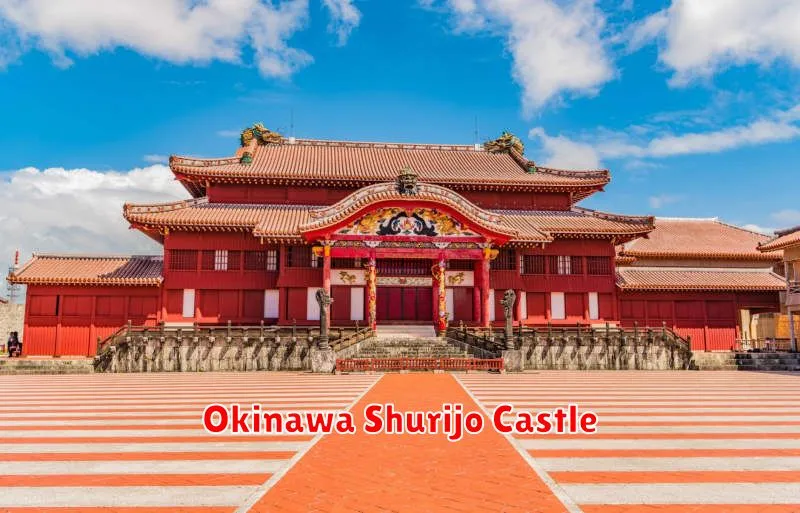
Nestled high on a hill overlooking Naha, the capital of Okinawa, Shurijo Castle is a breathtaking testament to the Ryukyu Kingdom’s rich history and culture. This UNESCO World Heritage site isn’t just a castle; it’s a sprawling complex of vibrant red-tiled buildings, intricate courtyards, and stunning architecture reflecting a unique blend of Chinese, Japanese, and Southeast Asian influences.
Explore the castle’s various halls and discover the intricate details of its construction, from the ornate carvings to the vibrant colors. Imagine the lives of the Ryukyu kings and queens who once resided within these walls. The panoramic views from the castle grounds offer a spectacular vista of Naha city and the surrounding coastline.
More than just a historical site, Shurijo Castle offers a captivating journey through time. Learn about the Kingdom’s unique cultural heritage, its sophisticated diplomatic relations, and its contributions to the arts and crafts of the region. Allow ample time to fully appreciate the beauty and significance of this remarkable landmark – it’s an unforgettable experience.
To-ji Temple
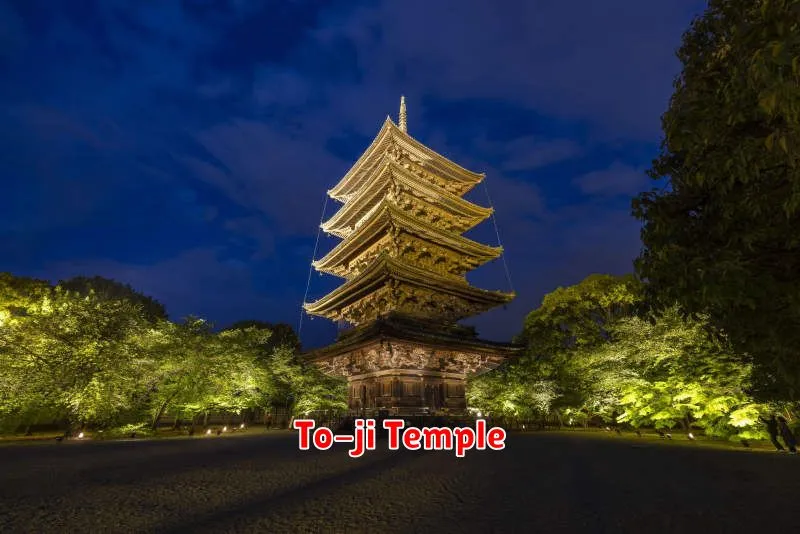
To-ji Temple, located in Kyoto, is a must-see for any visitor interested in Japanese history and architecture. This UNESCO World Heritage site boasts a stunning five-storied pagoda, one of the tallest wooden structures in Japan. Its impressive height dominates the skyline, offering a breathtaking sight.
Originally founded in the 9th century, the temple holds a significant place in the history of Shingon Buddhism. Beyond the pagoda, you’ll find numerous halls and gardens, offering a tranquil escape from the bustling city. Exploring the temple grounds provides a unique opportunity to appreciate traditional Japanese aesthetics, from the intricate carvings to the carefully manicured landscapes.
A visit to To-ji is more than just sightseeing; it’s an immersive experience into Japanese religious and cultural heritage. Don’t miss the opportunity to explore the Kondō (main hall) and the numerous other buildings within the temple complex, each showcasing the artistry and craftsmanship of bygone eras. The temple also hosts a vibrant flea market on the 21st of each month, offering a unique cultural experience.

